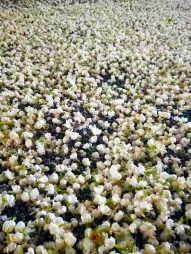As a tea drinker, we rarely to stop to think about who is studying our favorite beverage and what are they learning. The complexities of the tea leaf itself and what drives those complexities are head spinning. So, it is truly exciting to find a translation in English of a qualitative review of who has been conducting scientific studies of tea and what they are learning about the plant and beverage.
Published in the Frontiers of Plant Science, a group of scientists from the Hunan Agricultural University in Changsha China, did a review of the past decade of scientific studies of fresh tea leaves[1]. So, what did they find?
Who is Studying Tea?
It should not surprise anyone that most of studies of tea are coming out of China. They are largest and oldest manufacturer of tea, with the Chinese tea industry having an estimated total revenue of $99.8 billion in 2022. This accounts for approximately 1/3 of the total tea industry worldwide. The Chinese national government and local governments have designated the tea industry as a critical economic driver, making available government money for scientists to research tea. Interestingly over the past decade, while China logged over 600 studies, the United States actually managed to do 17 studies and worked in collaboration with the Chinese on enough of their studies to actually get mentioned by the authors. So, if you want to study tea in the US, head to the University of Florida, Rutgers University, Montana State University and the University of Georgia.
What is being Studied about Tea?
Both 2007 and 2017 seem to be watershed moments in the scientific study of tea. In 2007, the Human Metabolite Database was created. This freely available electronic database gives scientists detailed information about small molecule metabolites found in the human body. With access to this database, the study and identification of metabolites in tea as well as the effects of those metabolites on humans became the largest types of studies over the past decade. In 2017, the first full genome assembly of the tea plant was published which caused the expansion of studies into gene expression under stress caused by climate, soil and other changes. This category is expected to expand in the coming years as the publishing of studies, not surprisingly, decreased during the Covid pandemic.
The authors project based on current trends in topics in scientific literature that we will see the publication of more studies in the future around the metabolic effect on the tea plant of cultivation treatments (watering schedules, fertilization, pesticide, and fungicide applications). Other studies will include resilience of plant gene expression in the face of climate change, as these studies were starting to pick up in 2019 and again decreased dramatically because of the Covid pandemic.
As an avid tea drinker, these findings and projections bring me great joy and hope in the future for my favorite beverage.
[1] YiQuin Chin, YunFei Li, ChengWen Shen, and LiZheng Xiao, “Topics and trends in fresh tea (Camellia Sinensis) leaf research; A comprehensive bibliometric study”, Frontier of Plant Science, Volume 14, April 6, 2023.
















